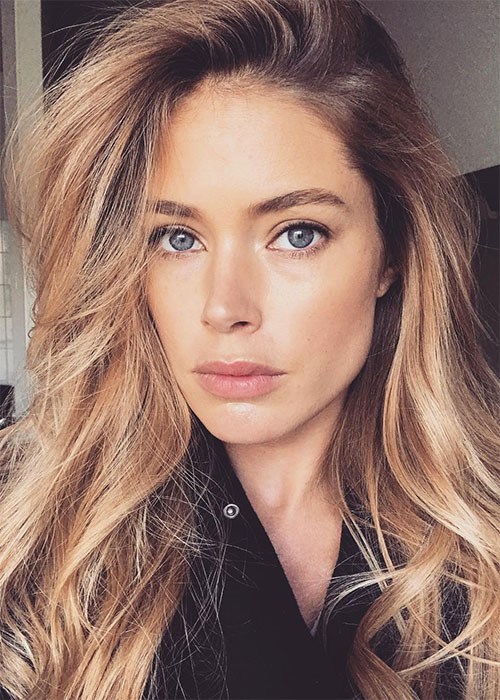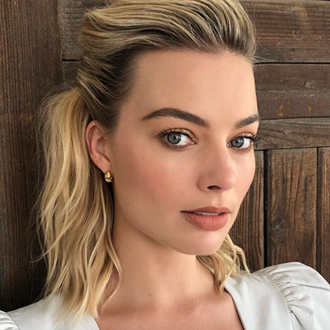How to read a DIY hair colour chart

The secret to achieving natural-looking results is all in this step
The secret to achieving natural-looking results is all in this step
At-home hair dye formulas have come a long way: They’re not as damaging and actually yield salon-worthy results (yes, even beginners will have a tough time messing them up!). But going the DIY route isn’t without some difficulty - namely, the task of choosing the right colour. From finding a hair dye shade that suits your skin tone, to picking one that will actually show up (and look the shade you expect) when layered over your existing hair colour, reading a hair colour chart requires a little know-how if you’re going to get it right.
What's the best hair colour for me?
The answer to ‘what hair colour suits me’ lies in a hair colour chart - you know, those charts that show swatches of the hair colours in a rang and have a bunch of numbers and/or letters next to them.
What these numbers and letters are trying to tell you is what the shade is like and whether or not it's suited to your existing hair colour. On a hair colour chart, there are two key things you need to know: level and tone.
#1 / The ‘level’ of hair colour
When we talk about hair colour, we tend to give it a name, like chestnut brown, honey blonde or rose gold, or group it by black, brunette, blonde or red. Hairdressers also group shades into ‘levels’ to describe how dark or light the hair colour is. The standard measurement for hair colour levels is on a scale of one to 10, with level one being the darkest (i.e. black) and level 10 being the lightest (a very light blonde like platinum blonde). You’ll find mention of these levels on your at-home hair colour packaging - they're the first number you'll see on the packaging.
This is what each level means:
Level 1: Black
Level 2: Very dark brown
Level 3: Dark brown
Level 4: Medium brown
Level 5: Light brown
Level 6: Dark blonde
Level 7: Medium blonde
Level 8: Light blonde
Level 9: Extra light blonde
Level 10: Lightest blonde
Generally, it's best to stick to a hair dye that's in the same level category as your existing hair colour for the most natural-looking results.
#2 / Hair colour tone
Hair colours fall into three tone categories: warm, cool and neutral. The tone of a hair dye refers to the finish of the colour and is often indicated by a succeeding number or letter (after the level number and usually following a decimal), but most brands tend to have their own lettering (or numbering) system, so you will need to check each brand’s specific colour chart.
As a guide, the International Color Code (ICC) is as follows:
.1 – Blue Ash (cool / blue pigment)
.2 – Mauve Ash (cool / purple pigment)
.3 – Gold (warm / yellow pigment)
.4 – Copper (warm / orange pigment)
.5 – Mahogany (neutral / violet red pigment)
.6 – Red (warm / red pigment)
.7 – Khaki (cool / green pigment)
.8 – Pearl Ash (cool)
.9 – Soft Ash (cool)
.0x – Natural (cool)
.x0 – Natural (depends on primary tone)
However, as an example, Schwarzkopf use the below tone scale:
.1 – Cendre
.2 – Ash
.3 – Matt (green)
.4 – Beige
.5 – Gold
.6 – Auburn (red-brown)
.7 – Copper
.8 – Red
.9 – Violet (purple)
While L’Oreal Professionnel use these codes in their salons:
.1 – Ash
.2 – Iridescent
.3 – Gold
.4 – Copper
.5 – Mahogany
.6 – Red
.7 – Mat
.8 – Mocha
If there are two numbers after the decimal, that means the colour payoff is more vibrant, and the first number is the more dominant tone of the two.
You should choose a hair colour that has a tone that is going to neutralise any unwanted undertones in your natural colour. For example, say your blonde hair is prone to turning yellow - you'll want a hair dye that has cool undertones, like ash.
Now that you know what the numbers on your at-home hair dye box mean, you can pick the perfect shade.
It’s worth noting that the above guide is to help you find the best - and most natural-looking - hair colour for you. However, if you want to dabble in one of the latest hair colour trends, then by all means go for it. Just know that it may look different against your skin tone to someone else (like your celebrity muse), and that it might not be the easiest colour to achieve (it’s best to always chat to a professional for their advice on how to achieve your desired colour when going more than two shades lighter or darker than your natural hair colour, as additional steps may need to be taken to get the colour right...and protect your hair from damage in the process). Temporary hair colour shades, like this one Khloe Kardashian used to get her pink hair colour, are also a great way to experiment with a new shade and see how it looks against your skin tone, without the commitment.
If you're thinking about trying a new hair colour, these are the most popular celebrity hair colours right now.
Do you dye your own hair? Do you have any disaster stories to tell about choosing the wrong colour?! Share with us below!
Main image credit: @doutzen

Chelsea is BEAUTYcrew’s Contributing Editor. She has a sweet spot for anything that claims to make skin glow and won’t leave the house without a slick of mascara. Chelsea has 10 years of experience as a beauty editor and her words can be found on BEAUTYcrew, Women’s Health, Daily Addict, The Joye and Primped.







